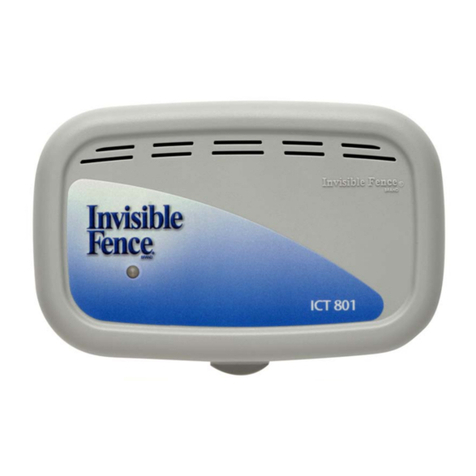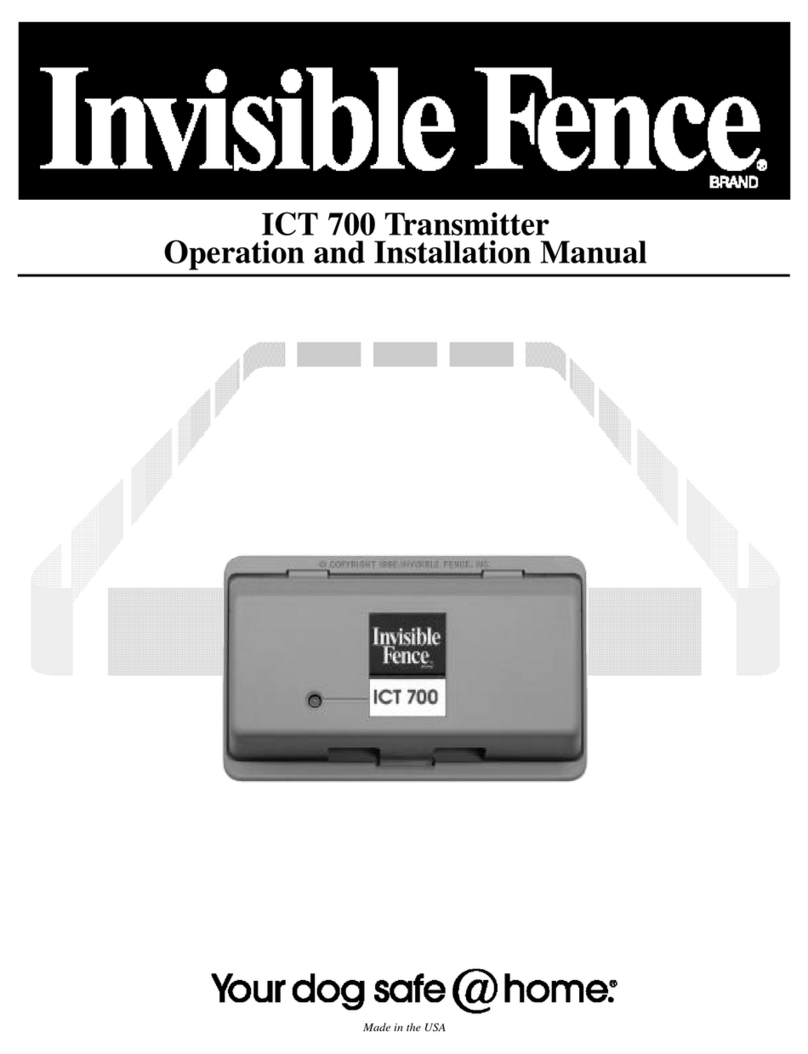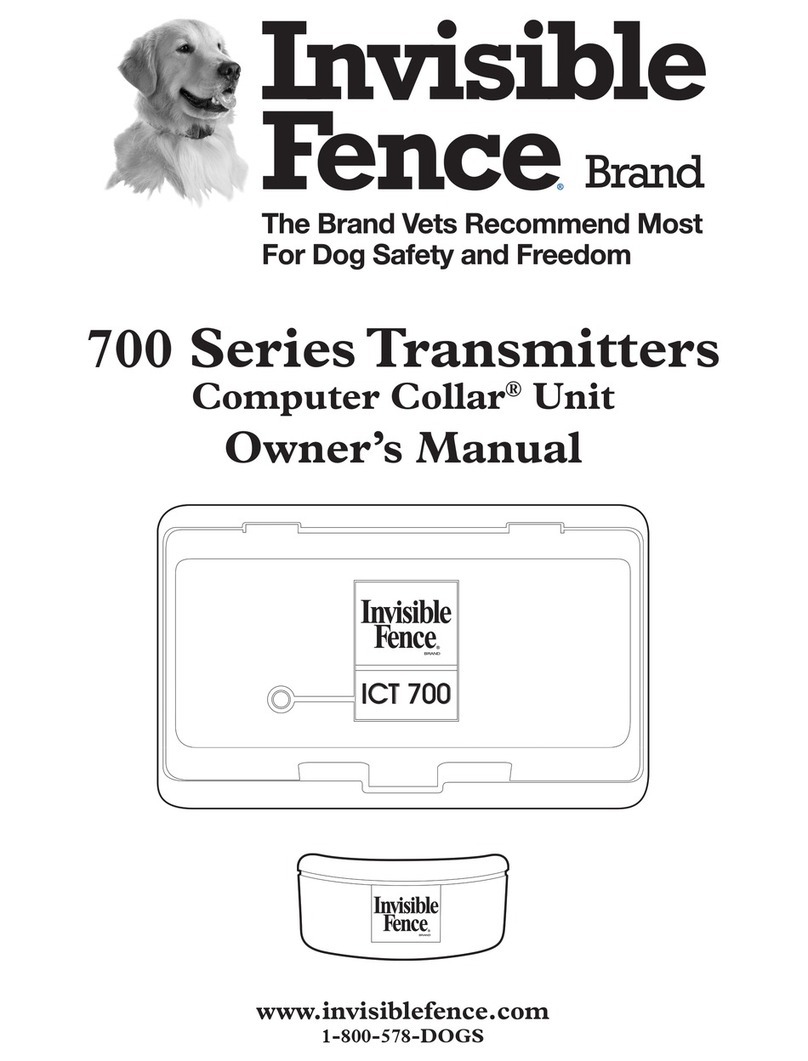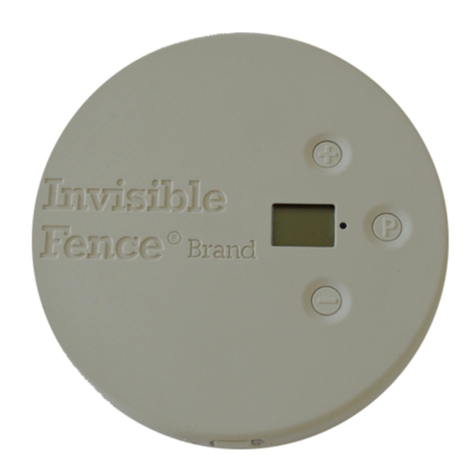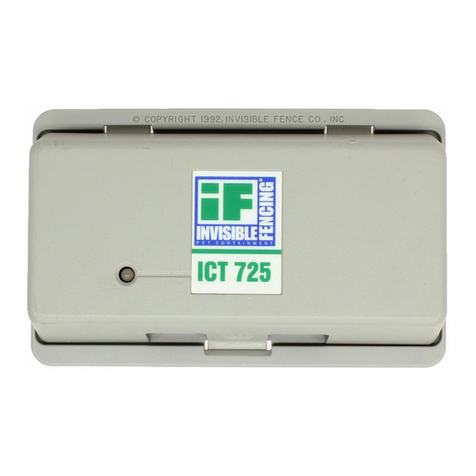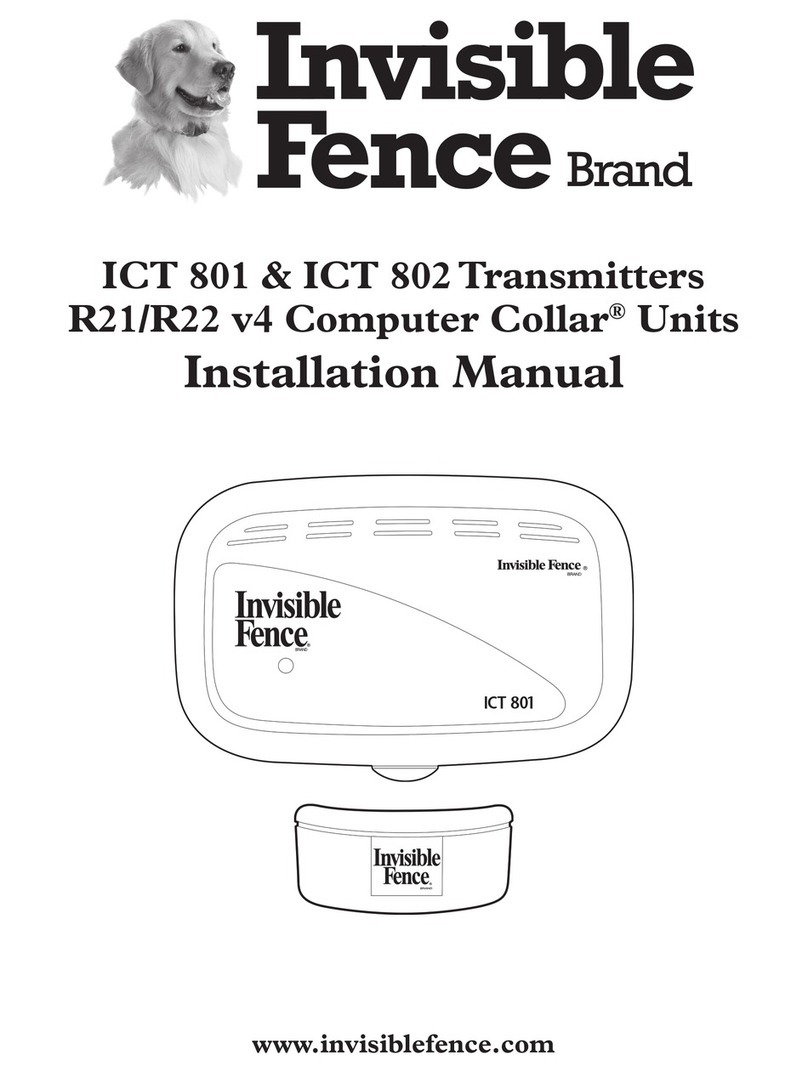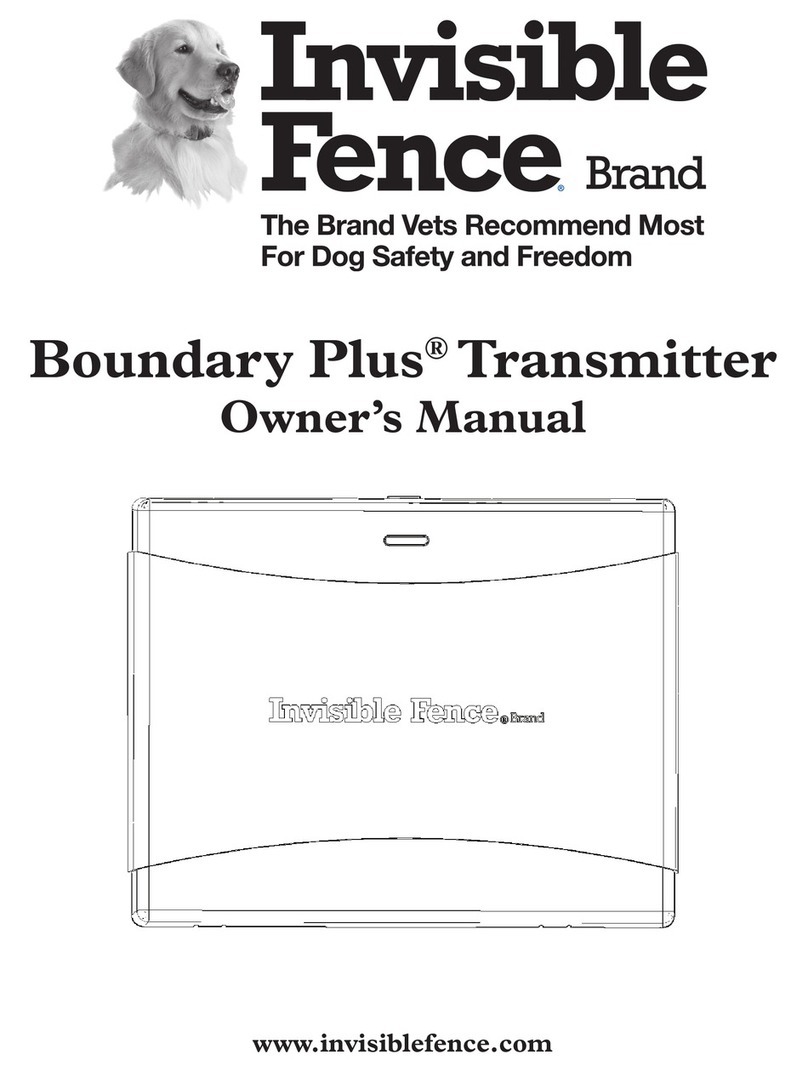
ICT 775, 12vAC Transformer,
Model 100-0018-01
Only use the model 100-0018-01, 12vAC trans-
former to supply the power to an ICT 775 system.
This transformer will supply the power necessary to
power the ICT 775. Specifications:
INPUT: 120vAC 60Hz 33.5W
OUTPUT: 12vAC 1667mA
UL/CSA CLASS 2 Transformer
UL listed/CSA certified
Warning: The model
100-0018-01 is the
only transformer authorized
by Invisible Technologies, Inc.
to be used to supply the power
to an ICT 775. The use of any
other transformer may result in
a malfunction of the transmit-
ter and the ICT 775 system.
When you turn on the
power to an ICT 775 transmitter, it will take the trans-
mitter up to 1 minute to stabilize. While the transmit-
ter is stabilizing the BreakAlert®alarm will sound.
After the transmitter has stabilized and the alarm has
shut off, proceed to set the width of the signal field
If the alarm continues to sound for more than a
minute, there is a problem with the signal field wire.
.
Caution: Always be sure to take
the Computer Collar®off your pet
before setting the signal field or making any
adjustment to your Invisible Fence®System.
Setting and Checking the Width
of the ICT 775 Signal Field
A signal field that is broadcasted out from the
signal field wire is what activates your pet's Computer
Collar receiver. The signal field can be set to various
distances from a signal field wire loop depending on
the layout and size of your property, and the tempera-
ment of your dog. The average setting of the signal
field is 6 to 10 feet(1.8 to 3m) wide.
Check to be sure that the transmitter is turned on
and that the loop type selector switch is set to the type
of system that you have. For a standard closed system
with a continuous signal field wire, the switch is set to
Normal, the UP position. For a 3 sided system, the
switch is set to 3 Side, the DOWN position.
The width of the signal field is set and checked
in exactly the same manner, whether for a standard
system with a closed signal field loop, or for a 3 sided
system.
The signal field adjustment knob is near the top
of the ICT 775 circuit board, it is surrounded by the
numbers 1 to 10. Turning the signal field adjustment
knob clockwise increases the width of the signal field
and counter clockwise decreases the width.
These adjustments do not
change the correction level of the
receiver, they only change the width
of the signal field from the signal
field wire loop.
Start by turning the signal field
adjustment knob to 5, the mid range.
Once again, wait up to 1 minute for the transmit-
ter to stabilize before you check the width of the sig-
nal field with a Computer Collar receiver. The
BreakAlert®may initially sound an alarm until the
transmitter stabilizes.
After the transmitter has stabi-
lized, check the width of the signal field
by holding a Computer Collar so that the
receiver is parallel to the loop wire. Hold the
collar so that the receiver is at about the
same height and on the same angle that it
will be when your pet is wearing it and
walk slowly toward the signal field
loop wire. The receiver will
sound a warning when it
is at the edge of
the signal field.
Note: A Computer Collar®receiver
has a fail safe mechanism.
The receiver will go through three complete
cycles of 10 seconds on and 10 seconds off
and then shut down. It will not reactivate
until it is taken completely out of the the
signal field, and is then brought back into it.
Make small gradual adjustments with the signal
field adjustment knob and check the width of the sig-
nal field after each adjustment.
After checking the width of the signal field, wait
1 minute before you change the setting of the signal
field again, and 1 more minute before checking the
width of the new signal field setting.
9
ICT 775 Transmitter Installation continued
